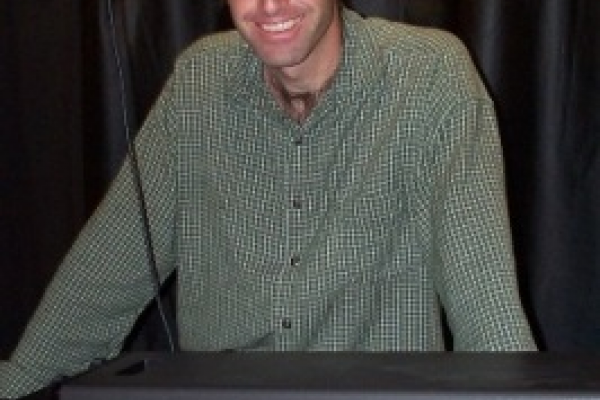
Arguably the most important and widely-used material in the burgeoning field of functional oxide electronics is strontium titanate, a (nominally) non-magnetic wide-bandgap semiconductor. Owing to its ubiquity in oxide materials science, studies of SrTiO3’s interesting dielectric, lattice, and optical properties represent mature research areas. However, considerable renewed interest in SrTiO3 was sparked in recent years by observations of unexpected and emergent magnetization and spin phenomena at interfaces between SrTiO3 and other nonmagnetic oxides such as LaAlO3 [1]. The formation and distribution of oxygen vacancies in SrTiO3 are widely thought to play an essential but as-yet-incompletely understood role in these interfacial magnetic and spin phenomena.
This talk will describe some surprising new aspects to the phenomenology of magnetism in SrTiO3, namely the observation of an optically-induced and persistent magnetization in bulk crystals of slightly oxygen-deficient SrTiO3 [2]. Using methods for magnetic circular dichroism (MCD) spectroscopy and optically-coupled SQUID magnetometry, this magnetization appears below 18K, persists for hours below 10K, and is tunable via the polarization and wavelength of sub-bandgap (400-500 nm) light. As such, magnetic patterns can be ‘written’ into SrTiO3, stored, and subsequently read out, using light alone. This magnetism occurs only in crystals containing oxygen vacancies, and is consistent with a metastable spin polarization of vacancy-related defect complexes. These data reveal a detailed interplay between magnetism, lattice defects, and light in an archetypal complex oxide material, pointing to applications for complex oxide materials in spin-electronics and which may yield new insights into the recent exciting spin physics observed at oxide interfaces.
[1] see, e.g.: H.Y. Hwang et al., Nature Materials 11, 103 (2012); J. Mannhart & D. G. Schlom, Science 327, 1607 (2010); MRS Bulletin “Functional oxide interfaces” 38, 1017-1063 (2013).
[2] W.D. Rice, P. Ambwani, M. Bombeck, J.D. Thompson, G. Haugstad, C. Leighton & S. A. Crooker, Nature Materials 13, 481 (2014); ibid, J.Vac. Sci. Tech.B 32, 04E102 (2014).
